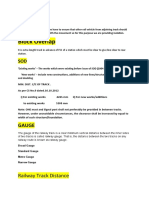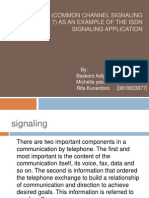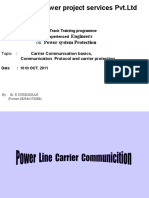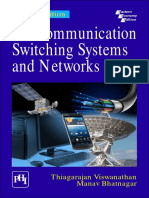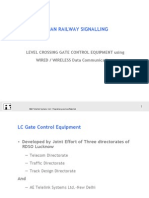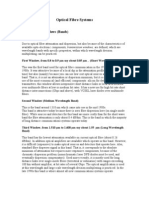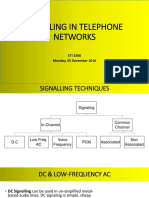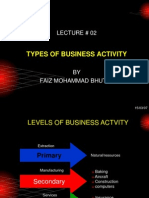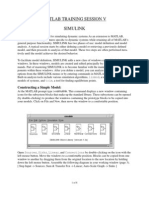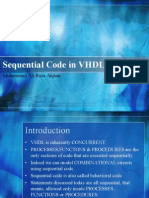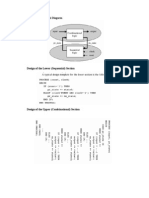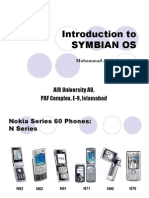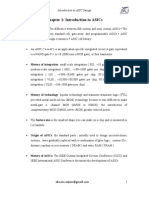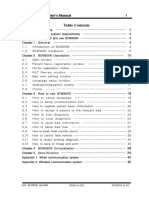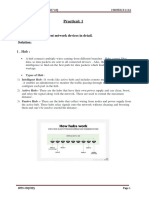Local loop and 2W/4W circuits
Subscriber loops are and will remain two-wire (2W) circuits Early telephone connections through the network were two-wire circuits Larger connections attenuate the speech signal, amplifiers are needed In two-wire circuits amplifiers may cause oscillation, when output signal loops back to the input circuit Inside the network we use two wires for each direction, i.e. four-wire connections (4W)
�2W/4W circuits
4W connections are easy to maintain because transmission direction is independent of each other
�2W/4W circuits
To connect a two-wire local loop to a four wire network a circuit called 2/4 wire hybrid is needed Two separate transformers are needed, both of them consist of three similar tightly coupled windings Current of the receive pair generates two currents with opposite polarity through the other two coils of transformer T2 Signal from receive pair is not connected to the transmit pair ideally
�2W/4W Hybrid
�2W/4W Hybrid
The 2W/4W hybrid performs the following operations
Separates the transmit and receive signals Matches the impedance of the two-wire local loop to the network circuit Provides a loss to signal arriving on the receive path, preventing them from entering the transmit path, which would otherwise cause an echo
�2W/4W circuits
In practice signal is connected back, so there is an echo Echo is severe and disturbing when there is long propagation delay Echo cancellers are used in network to tackle this problem ISDN basic rate interface has bidirectional 160 kbps data transmission on a two wire circuit (ordinary subscriber loop)
�Switching and Signaling
Main task of the telephone or ISDN exchange is to build up a physical connection between subscriber A and B The speech channel is connected through out the call This principle is called circuit switching which differs from packet switching In past switching matrix was electromechanical and directly controlled by pulses from telephone Presently common control unit is an efficient and reliable computer with heavy real time software This kind of exchange is called Stored program Control (SPC) exchange
�Signaling
Control unit of exchange receives the subscriber signaling as dialed digits Usually the call is routed via many exchanges Signaling information needs to be transmitted from one exchange to another This can be done via Channel Associated Signaling (CAS) or Common Channel Signaling (CCS)
�Signaling
�Channel Associated Signaling
When a call is connected from a local exchange to the next exchange, a speech channel is reserved for this call At the same time another channel is reserved only for signaling purposes Each speech path has its own dedicated signaling channel while the call is connected This channel can be, for example, a signaling channel in time slot 16 of a primary PCM frame
�Channel Associated Signaling
CAS signaling steps are as follow
First, speech channel and the related signaling channel are seized from exchange A to exchange B Then the telephone number of B is transmitted to exchange B, which sends the ringing signal to B When B answers, the speech connection is switched on and the conversation may start If subscriber B hangs up first, a clear-back (CBK) signal is transmitted from exchange B to A
�Channel Associated Signaling
Exchange A responds with a clear-forward (CLF) signal when subscriber A hangs up or when the time limit expires The call is then disconnected by both exchanges
There are many different signaling systems used for CAS, some of them include additional signals CAS is still used in telephone networks, but is gradually being replaced with more efficient standardized method CCS
�Channel Associated Signaling
Exchange A Exchange B
Subscriber A
B-Exchange seizes channel Seizure Acknowledgement and device for signaling
Seizure
Subscriber B
Address information B-Answer
B-number received, ringing signal to B
B-subscriber lifts the handset
Conversation Clear-Back
A-subscriber hangs up or time limit exceeded
Clear-Forward
B-subscriber hangs up
�Common Channel Signaling
CCS is based on the principles of computer communications where information frames are exchanged only when required Frames include information about
the connection to which the message belongs address of the destination exchange dialed digits if the B subscriber has answered
In most cases only one data channel between two exchanges is required for all call control
�Common Channel Signaling
A widely used international standard of CCS is called CCS7, also known as signaling system number 7 (SS7), CCITT#7, or ITU-T 7 It is used in all modern telecommunication networks such as ISDN and GSM Establishing a call required the same signaling information as mentioned earlier In the case of CCS this information is carried in data frames that are transferred between exchanges via a common data channel
�Common Channel Signaling
CCS signaling steps are as follow
The dialed digits are transmitted from subscriber A to the local exchange A as explained earlier Exchange analyses the dialed digits to determine to which direction it should route the call Then the exchange builds up a data packet that contains the address of exchange B This signaling message called initial address message (IAM) is then sent to exchange B The remaining digits that did not fit into the IAM are then transmitted into one or more subsequent address messages (SAMs)
�Common Channel Signaling
When all the digits that identify subscriber B are received by exchange B, it acknowledges this with an address complete message (ACM) This message also contains information if the call is to be charged or not and if the subscriber is free or not Exchange B transmits the ringing tone to subscriber A and the ringing signal to subscriber B, telephone B rings When B lifts the handset, an answer signal charge (ANC) is sent to start charging Exchange B stops the ringing tone and ringing signal, speech circuit is connected and conversation may start
�Common Channel Signaling
When subscriber B hangs up, exchange B detects the on-hook condition and sends a CBK signal to exchange B Exchange A responses with CLF signal All exchanges on the line transmit the CLF message to the next exchange Each receiving exchange acknowledges it by a release guard (RLG) signal This RLG message indicates to the receiving exchange that the connection is cleared and the channel is released and available for new calls
�Common Channel Signaling
Exchange A Exchange B
Subscriber A
IAM (Initial Address Message) SAM (Subsequent Address Message)
Subscriber B
Ringing Tone
ACM (Address Complete Message)
B-number received, ringing signal to B
ANC (Answer signal, Charge) B-subscriber lifts the handset
Conversation
CBK (Clear-Back) CLF (Clear-Forward) RLG (Release Guard) B-subscriber hangs up
�Switching Hierarchy
International Traffic Exchange Regional Center International Connections
Area 1
Area 2
Sectional Center
Primary Center
Toll center or end office (Local exchange)
�Switching Hierarchy
�International networks
Each country has at least one international switching center to which trunk exchanges are connected High capacity optical systems interconnect international exchanges World wide inter-connections are possible due to
Submarine cables Microwave radio systems Satellite connections
�Telecommunications Networks
Telecommunications networks are divided in two major categories
Public networks
Owned and managed by network operators Built and designed to serve the needs of particular organizations. They usually own and maintain the networks themselves
Private or dedicated networks
Virtual private networks
�Public networks
Telephone networks
Main public network in use, sometimes referred to as plain old telephone service (POTS)
Mobile telephone networks Telex network
Very slow bit rate, 50 or 75 bits per second, which makes it robust Unidirectional, low cost, light weight Simple pagers just say beep, but sophisticated ones can receive large amount of text
Paging networks
�Public networks
Public data networks
Point to point connections or circuit switched connections or packet switched connections Leased lines are economical solution for connection between LANs of corporate offices
Internet ISDN Radio and TV networks
�Private or dedicated networks
Voice communication networks
Examples are the police and other emergency services and taxi organizations using private mobile radio (PMR) LANs with main frame computers feeding information to the branch offices. Banks, hotel chains, travel agencies etc have their own separate data networks
Data communication networks
�Virtual Private networks (VPN)
Often it is very expensive for an organization to set up its own private network A choice is to lease resources from a public network operator, which are also shared with other users VPN provides a service similar to an ordinary private network, but the systems in network are property of the network operator An important application of VPN is intranet LANs at different sites are interconnected using open internet technology Firewalls are used in an intranet for authentication and security purposes between the parties
�Intelligent Network (IN)
A conventional telephone networks establishes a connection that is identified by a number of Bsubscriber There is no intelligence, dialing a certain number makes a connection to a certain socket, whether user B is available or not IN is an ordinary telephone network with some additional capabilities like flexible call routing and voice notifications In IN, physical number an service number have no fixed relation and it may also change with time
�Intelligent Network (IN)
SMS Server for value-added services SSP IP
SMS: Service Management Center
DB
SCP
SCP: Service Control Point
SSP: Service Switching Point IP: Intelligent Peripheral
SSP
DB: Data-Base
�Intelligent Network (IN)
A certain range of telephone numbers is reserved of IN services SSP (Service Switching Point) performs the function of an exchange It detects the IN service number and requests routing information from SCP (Service Control Point) SMS (service management center) for updating services or introducing new ones IP, intelligent peripheral , gives the voice notifications if required DB (database) stores the service information, for example number conversion for a call transfer






